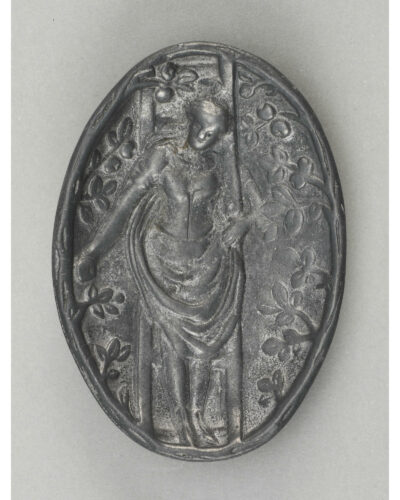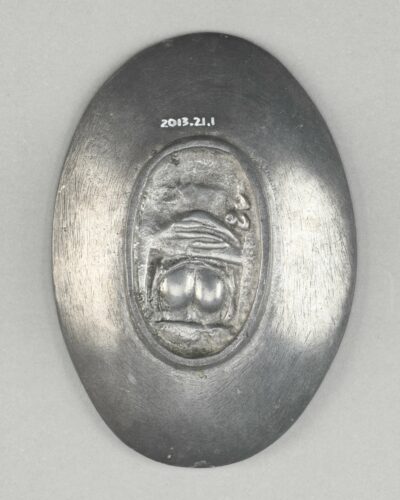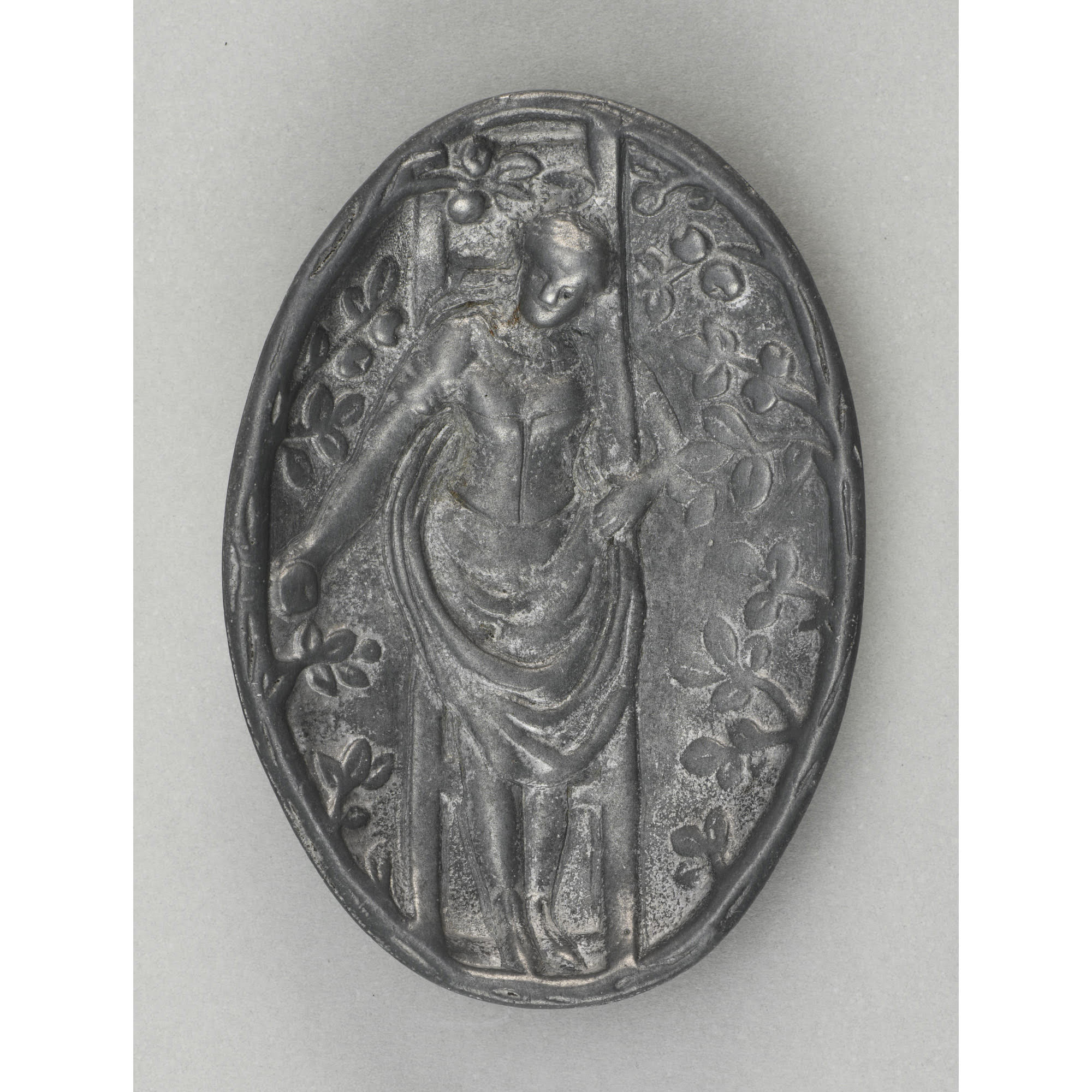Able Seaman Albert Charles Smith Phillips served in the Royal Navy from 1910 until 1923, joining the submarine service in 1913. Most notably, he was awarded the Russian Order of St George during his service in the Baltic. He was recognised for his contribution to the sinking of the German cruiser SMS Prinz Adalbert.
During Phillips’s time serving in the Baltic he, along with two other sailors, created a mould into which they smelted faulty engine bearings to create an ashtray. This ashtray was rather risqué: featuring a seemingly innocent scene of a woman leaning against a ladder in an orchard on one side, but on the opposite side the reverse of the image is depicted with the woman’s bare bottom revealed.


Sailors frequently undertook creative pursuits as ‘downtime’ and periods of boredom were very common during the First World War. This was especially true of those serving within the Submarine Corps, where showing patience not only resulted in the production of art, but was itself an art form when it came to remaining undetected. One of the commanders of the British submarines during the First World War claimed to play bridge whilst at the bottom of the North Sea to pass the time it took for enemy patrols to pass over.[1]
As for the construction of this ashtray we cannot be exactly sure where and when it was made. Documentation detailing which submarines sailors were posted to at specific times is often vague. Men were often moved between vessels during their service. It is possible it could have been made over the winter months when submarine E.8 and E.18 (both which Phillips served in) were frozen into the port of Reval (now Tallinn) in the Gulf of Finland, from November 1915 until the spring of 1916 – or the following winter at the end of 1916. [2] It is easy to imagine that this freezing cold period, where regular operations were often suspended, would result in sailors having to come up with ways to entertain themselves.
It’s also possible that it was made in January 1918 when Phillips was serving in the vessel E.9 and visited Petrograd (the port of St. Petersburg) before leaving the Baltic to eventually return to England. Phillip’s son, recalled his father had said he was tied up at Leningrad (now St. Petersburg) when the tray was made. Phillips transferred to the New Zealand Division of the Royal Navy in September 1920. Joining the crew of the cruiser HMS Chatham assigned to the New Zealand Station. He was discharged ashore in 1923 and settled in New Zealand.
[1] Gray, Edwyn. 2016. British Submarines at War 1914-1918. Pen & Sword Maritime. Page 30.
[2] Gray, British Submarines at War. Page 88.
Bibliography:
Gray, Edwyn. 2016. British Submarines at War 1914-1918. Pen & Sword Maritime.
By Lewis Dunster, Collections Assistant

